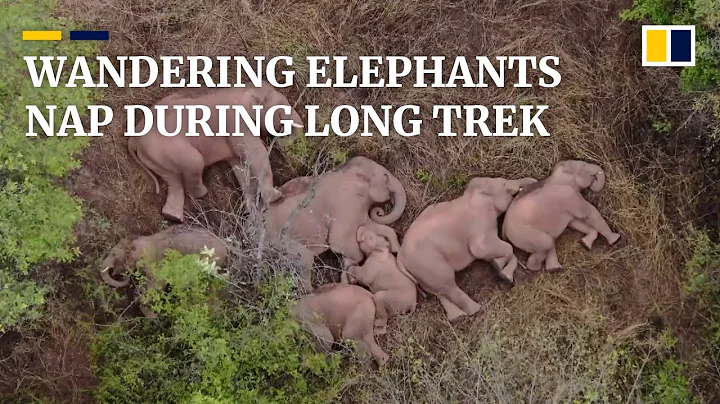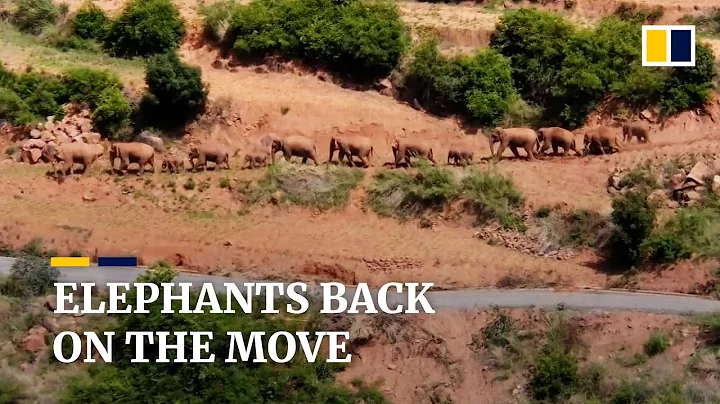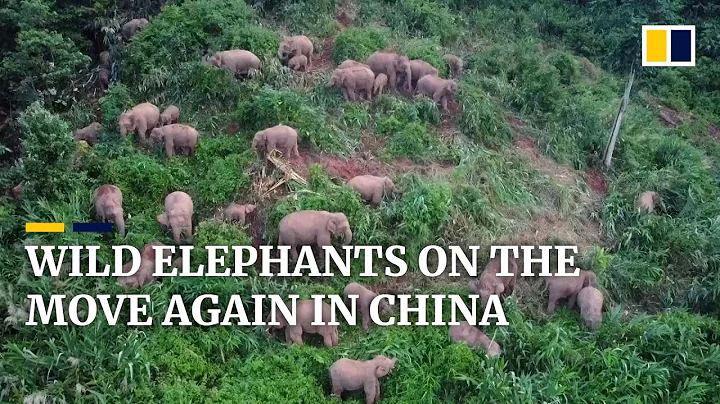Live broadcast from Nanyang Last year, 15 wild elephants migrating north from Xishuangbanna became a hot topic on social media. Their every move has a natural "variety show feel", and even their usual routines of eating, walking, and sleeping attract everyone's attention. Their strength has undoubtedly attracted a large number of fans.
Do you know? In the late Pleistocene, about 100,000 years ago, elephants also lived in our Nanyang area. They were close relatives of the Asian elephants that "ran away from home" in Yunnan, named Nama elephants. Yesterday (June 28), the reporter saw a Na Mammoth on display at the entrance of the first unit "The Beginning of Prehistoric Nanyang Civilization" of the "Civilization in Wan - Basic Historical Exhibition of Nanyang City Museum" Fossil teeth.
Ivory fossils prove that Nanyang’s prehistoric environment was good.
This ivory fossil was collected by the Municipal Museum in Nanzhao County in the 1970s and 1980s. The fossil is 3.6 meters long and has a maximum diameter of 0.25 meters. The curved ivory rises upward and seems to be still intact. A high-pitched elephant cry can be heard.

Ornamental ivory fossils
Li Yuan, deputy research librarian of the Municipal Museum, told reporters that Nama elephants are one of the groups of ancient rhomboids and are extinct. They lived from the late Pleistocene to 10,000 years ago, about 100,000 years ago. of the Paleolithic Age, distributed in North China. It mainly lives in tropical and subtropical environments with warm and humid climates and luxuriant aquatic plants. It is distributed in the Yangtze River Basin and the Huaihe River Basin in my country, but is rare in the Yellow River Basin. Later, it gradually became extinct with changes in temperature, environment and other factors. .
Compared with Asian elephants, Nama elephants are taller, have taller skulls, flat and wide frontal bones, straight tusks and upward and internal curves. Generally, the length of tusks can reach 3 to 4 meters, and molars are tall. Crown of teeth, suitable for chewing hard plants.
Since elephants generally live in forests, jungles and grasslands with warm and humid climates in the tropics and subtropics, why are there elephants in Nanyang, which is located in the Central Plains? We might as well take a look at the abbreviation of Henan Province, "Yu". Its shape is a person holding an elephant, which shows that Henan Province has a deep connection with elephants.
According to archaeologists, the climate in the Yellow River Basin in ancient times was hot and humid, which was suitable for elephants to survive. Henan is located in the Central Plains and has vast and flat land in the Yellow River Basin, which is more suitable for elephants to survive. Our Nanyang is located in the transitional area between subtropical and temperate zones, with abundant rainfall, a warm climate and a wide variety of species. It was once a paradise for dinosaurs and ancient apes to live and reproduce, where humans created a splendid prehistoric civilization .
"As for the ecological environment of Nanyang in ancient times, Eastern Han scientist and writer Zhang Heng also made detailed records and vivid descriptions in "Nandu Fu". For example, 'its trees are tamarisk, pine wedges, cypresses and 杻橿, The maple tree is the emperor's daughter's mulberry. The wind in the valley increases the mourning. '" Li Yuan said that the period when Nama Elephant lived coincides with the period and place where Nanzhao Man lived in the Paleolithic Age. From this, we can boldly speculate that Nama Elephant was once a Nanzhao Man. hunting object. In a place where ancient apes and Nama elephants live together, a suitable natural environment is naturally indispensable. This shows that Nanyang has been a place with abundant water resources and lush plants since ancient times.
The "big guy" has been discovered in Nanyang many times.
In fact, regarding the Nama ivory fossil, Nanyang is not the only one unearthed.
On March 16, 2020, in Kangzhai Village, Huyang Town, Tanghe County, villagers discovered two 3-meter-long ivory fossils while digging a pond, which were later successfully excavated by the city and county cultural relics department.
On August 6, 2021, Mr. Wang, a citizen, drove to the Municipal Museum and informed that while fishing on the Baihe River near Wanwan Forest Farm in Wancheng District, he found a "everyone" in the water that was similar to the Nammu elephant tooth fossil displayed in the exhibition hall of the Municipal Museum. Partner".Staff from the city museum and cultural conservation department rushed to the scene and initially identified it as a Nama ivory fossil, dating from 200,000 to 50,000 years ago. According to on-site measurements, the ivory fossil is about 3.6 meters long and has a maximum diameter of 0.3 meters.
According to Mr. Wang, a citizen, they often go to this section of the river to pick up stones and fish. They found ivory in the river due to the rain in Nanyang a few days ago. After the water receded, things similar to ivory were washed away by the flood, and were found in the river. Elephant-like bones were found nearby.
The previously unearthed Nama elephant tooth fossils were all found in counties surrounding the urban area. This time they were found in the urban area. Li Yuan said that it is not only useful for studying the paleontological evolution, ancient geological structure, and ancient elephants in Henan Province. The activities and other activities are very precious information, and they also make people have endless memories and reveries about the changes in the world.
Not only that, the Nanyang City Museum has collected Nama ivory fossils in Zhenping County, Tanghe County, and Nanzhao County, all with a length of more than 3 meters. Xichuan County Museum and Fangcheng County Museum also have Nama ivory in their collections.
The discovery of such a large number of fossils shows that Nanyang has been a livable place since ancient times. ( all-media reporter Wang Yanjuan text/picture )
Editor: Qi Jie
Preliminary review: Chen Xiaopu
Final review: Lu Yuanpeng





















